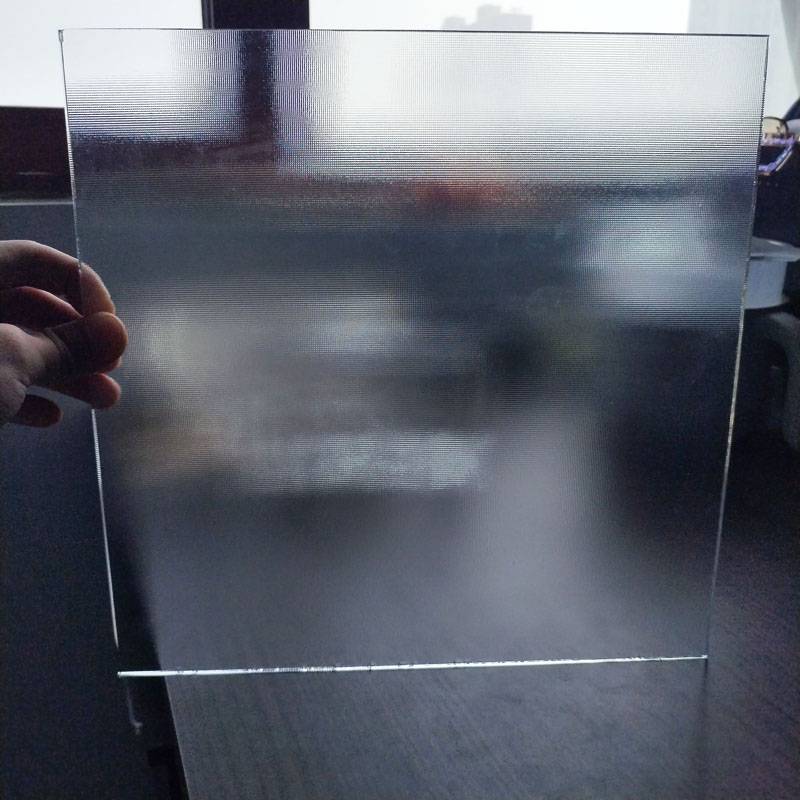The Benefits of Float Annealed Glass A Comprehensive Overview
Float annealed glass is a widely used material in various industries, offering a combination of aesthetic appeal, practicality, and durability. This specialized type of glass is produced through a meticulous manufacturing process that yields a high-quality product suitable for diverse applications. In this article, we will explore the properties, advantages, and typical uses of float annealed glass.
The float glass process, invented in the 1950s, involves melting raw materials such as silica sand, soda ash, and limestone at high temperatures. The molten glass is then poured onto a layer of molten tin, allowing it to spread and form a smooth, flat surface. After this initial formation, the glass undergoes annealing, a gradual cooling process that reduces internal stresses and ensures uniform thickness. This production method results in glass that is not only visually appealing but also structurally sound and consistent in quality.
One of the most significant advantages of float annealed glass is its exceptional clarity. The manufacturing process minimizes imperfections, allowing for high light transmittance and minimal distortion. This characteristic makes float annealed glass an ideal choice for applications where transparency is paramount, such as windows, facades, and display cases. Moreover, the glass can be treated with various coatings to enhance its energy efficiency or to provide additional functionalities, such as UV protection.
float annealed glass
Durability is another key benefit of float annealed glass. While it is not as robust as tempered glass, it is still strong enough to withstand everyday wear and tear. The annealing process contributes to this durability by relieving internal stresses that could lead to cracking. Consequently, float annealed glass is commonly used in environments where it is exposed to impacts and weather conditions, including residential and commercial buildings.
In terms of versatility, float annealed glass is adaptable to various design requirements. It can be manufactured in different sizes and thicknesses, making it suitable for a wide range of applications, from simple picture frames to elaborate architectural designs. Additionally, it can be easily cut, polished, and edge-finished to meet specific project demands.
The environmental impact of float annealed glass is also worth noting. The production process generally involves sustainable practices, as glass can be recycled indefinitely without losing its quality. This makes it an eco-friendly choice for architects and builders who prioritize sustainability in their projects.
In conclusion, float annealed glass is a remarkable material that combines beauty, durability, and versatility. Its unique properties make it an essential component in architecture and design, catering to both aesthetic and functional needs. Whether for residential windows, commercial facades, or decorative art pieces, float annealed glass continues to be a favored choice among professionals and homeowners alike.
 Afrikaans
Afrikaans  Albanian
Albanian  Amharic
Amharic  Arabic
Arabic  Armenian
Armenian  Azerbaijani
Azerbaijani  Basque
Basque  Belarusian
Belarusian  Bengali
Bengali  Bosnian
Bosnian  Bulgarian
Bulgarian  Catalan
Catalan  Cebuano
Cebuano  Corsican
Corsican  Croatian
Croatian  Czech
Czech  Danish
Danish  Dutch
Dutch  English
English  Esperanto
Esperanto  Estonian
Estonian  Finnish
Finnish  French
French  Frisian
Frisian  Galician
Galician  Georgian
Georgian  German
German  Greek
Greek  Gujarati
Gujarati  Haitian Creole
Haitian Creole  hausa
hausa  hawaiian
hawaiian  Hebrew
Hebrew  Hindi
Hindi  Miao
Miao  Hungarian
Hungarian  Icelandic
Icelandic  igbo
igbo  Indonesian
Indonesian  irish
irish  Italian
Italian  Japanese
Japanese  Javanese
Javanese  Kannada
Kannada  kazakh
kazakh  Khmer
Khmer  Rwandese
Rwandese  Korean
Korean  Kurdish
Kurdish  Kyrgyz
Kyrgyz  Lao
Lao  Latin
Latin  Latvian
Latvian  Lithuanian
Lithuanian  Luxembourgish
Luxembourgish  Macedonian
Macedonian  Malgashi
Malgashi  Malay
Malay  Malayalam
Malayalam  Maltese
Maltese  Maori
Maori  Marathi
Marathi  Mongolian
Mongolian  Myanmar
Myanmar  Nepali
Nepali  Norwegian
Norwegian  Norwegian
Norwegian  Occitan
Occitan  Pashto
Pashto  Persian
Persian  Polish
Polish  Portuguese
Portuguese  Punjabi
Punjabi  Romanian
Romanian  Russian
Russian  Samoan
Samoan  Scottish Gaelic
Scottish Gaelic  Serbian
Serbian  Sesotho
Sesotho  Shona
Shona  Sindhi
Sindhi  Sinhala
Sinhala  Slovak
Slovak  Slovenian
Slovenian  Somali
Somali  Spanish
Spanish  Sundanese
Sundanese  Swahili
Swahili  Swedish
Swedish  Tagalog
Tagalog  Tajik
Tajik  Tamil
Tamil  Tatar
Tatar  Telugu
Telugu  Thai
Thai  Turkish
Turkish  Turkmen
Turkmen  Ukrainian
Ukrainian  Urdu
Urdu  Uighur
Uighur  Uzbek
Uzbek  Vietnamese
Vietnamese  Welsh
Welsh  Bantu
Bantu  Yiddish
Yiddish  Yoruba
Yoruba  Zulu
Zulu 

